In the 6th century BC, Cyrus II of Persia embarked on a mission of conquest. Kingdom after kingdom fell before him as he formed the Achaemenid Empire, the largest empire that the world had ever seen up until that point. It kept growing under successors like Cambyses and Darius until it, too, fell under the might of Alexander the Great during the late 4th century BC.
Cyrus left behind him a rich legacy, but one which is still filled with uncertainties, mythologies, and misapprehensions. He has a reputation not only as a conqueror, but also as an innovative administrator and a pioneer of human rights. How much of that is deserved we will try to find out now as we look at the life of Cyrus, the Great King.
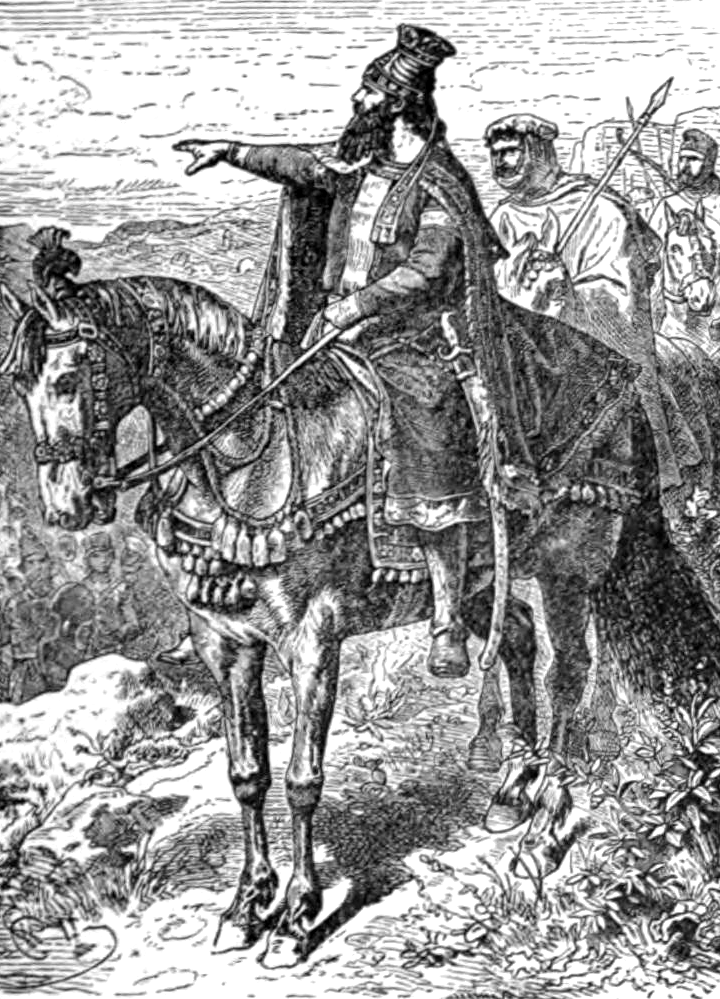
Legendary Beginnings
Cyrus II was born ca. 600 BC in Anshan, an ancient city ruled by his father, King Cambyses I. His mother was Mandane, a daughter of Astyages, king of the Median Empire.
Greek historian Herodotus gives us a very detailed and dramatic account of Cyrus’s childhood. However, it leans heavily on the mythological side but, then again, so do most ancient sources that deal with Cyrus.
According to Herodotus, the marriage between Cambyses and Mandane occurred after Astyages had a prophetic dream where water flowed from his daughter’s womb and flooded his kingdom. He consulted with his magi who concluded that his dream was a foreboding vision that meant the downfall of his empire. Astyages wanted to place his daughter somewhere safe and out of the way. That’s why he married her to Cambyses, a Persian who ruled over a small and weak city which would surely pose no threat to his kingdom.
Soon afterwards, the Median king had another dream. This time, vines sprouted out of his daughter’s womb, covering the kingdom. Astyages and his magi took this to mean that Mandane’s offspring was the one who would prove to be his downfall. The conclusion was simple – the child had to die.
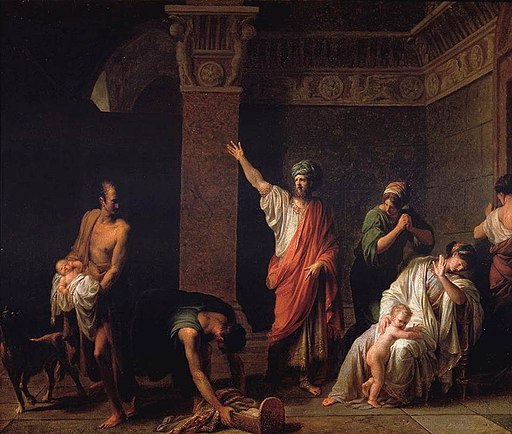
When Cyrus was born, Astyages gave him to one of his most trusted servants, a Mede named Harpagus. The king commanded him to take the child home, kill him and bury him. Harpagus agreed, but couldn’t go through with it. Instead, he gave the baby to a cowherd named Mitradates and ordered him to do the evil deed by leaving the child in the “most desolate part of the mountains.”
Mitradates agreed, but also couldn’t bring himself to do it. As it happened, his own wife had been pregnant and had just given birth to a stillborn child. They decided to pull the old switcheroo and left their son in the mountains and raised Cyrus as their own. The boy was not called Cyrus during this time and, while Herodotus does not mention his name, Strabo gives it as Agradates.
Cyrus lived as the son of a cowherd for ten years until he was found out. One day, he was playing with the other children in his village. He was proclaimed “king” and gave out orders which one of the other boys refused to obey. To address this insult, the “king” had the other boy beaten. His father, a noble Mede named Artembares, complained to the real king. Because Artembares was an important courtier, Astyages himself went to talk with the son of a cowherd and he soon realized his true identity. Subsequently, he got the real story out of Mitradates and, later, Harpagus.
Cyrus got off easy. Upon renewed consultation with his magis, Astyages concluded that, since Cyrus was made “king” by the boys of his village, his prophetic dream had been fulfilled and, therefore, the child was no longer a threat. He was still of Persian blood, though, so he was sent to live with his birth parents in Anshan.
The one who truly felt the wrath of Astyages was Harpagus, the minion who disobeyed the king’s order. Outwardly, Astyages showed no ill will towards Harpagus and even invited him to a feast in honor of his newly-discovered grandson. There, he tricked his servant into eating his own son who had been killed, dismembered, boiled and roasted before the banquet. Astyages revealed his malevolent act by presenting Harpagus with his son’s head, hands, and feet after he had finished eating.
Publicly, Harpagus reacted calmly, simply saying that whatever his king did pleased him. He collected his son’s remains, buried them at home and began plotting his revenge.
Conquering Media
In 559 BC, Cyrus ascended to the throne of Anshan. Like his predecessor, he had to acknowledge the authority of the Median Empire and pay tribute. Unbeknownst to King Astyages, though, Harpagus began courting the new king and encouraged him to get the Persians to rebel against Astyages, promising that he will get the Medes to do the same.
Cyrus was onboard with the plan, but needed to find a way to unite the Persians. Back then, Persia consisted of multiple tribes and he required all their strength to stand against the Kingdom of Media. Cyrus’s own tribe was the Pasargadae, but Herodotus also identified the Maraphii, the Maspii, the Derusiaei, the Panthialaei, the Germanii, the Dahae, the Mardi, the Dropici, and the Sagartii.
Cyrus summoned their representatives to him and told each to bring a sickle. On the first day, he put them to work and had them clear and prepare a stretch of land up to twenty furlongs long in each direction. On the second day, he had them wash and take part in a sumptuous feast in a meadow where wine and food were plentiful. Afterwards, he simply asked them which day they preferred and, obviously, everyone answered the second day. That is when Cyrus promised those who stood by him only days like that free of toil and slavery, while those who opposed him would have “labors unnumbered.”
Most Persians resented having to submit to the Medes in the first place, so Cyrus’s proposition was not exactly a hard sell. Even so, we do not know if all the tribes joined in on the revolt, but there were enough for Cyrus to go to war against the Median Empire.
In a moment of pure foolishness, Astyages assigned Harpagus as commander of his army. We don’t know if he forgot what he did to his son or if he genuinely believed that his general had forgiven him for it. Either way, Harpagus definitely remembered and had waited patiently to enact his vengeance.
He kept his end of the bargain with Cyrus and convinced many Medes to betray Astyages. Therefore, as the Median army marched, many soldiers deserted while others openly joined the Persians. Those who remained loyal to the old king were defeated in battle.
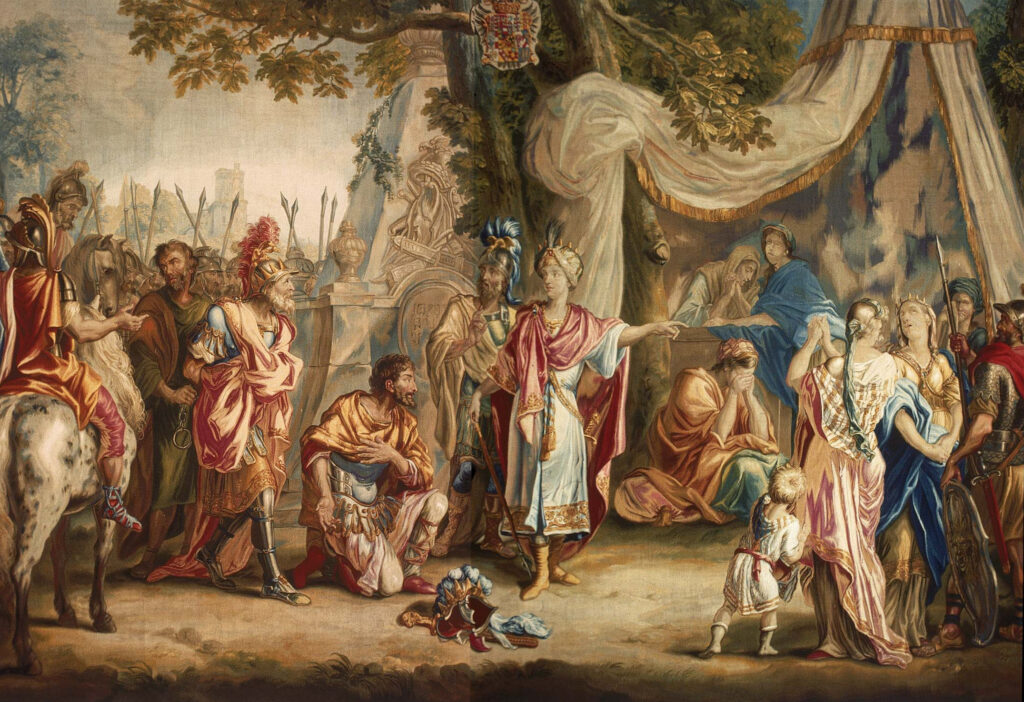
Not left with much choice, Astyages assembled another army from the men left in Ecbatana, the kingdom capital, and led it himself against Cyrus. This new force mostly consisted of youths and old men and they, too, rebelled against the king and surrendered Astyages over to Cyrus. This happened in 550 BC, according to the Nabonidus Chronicle, and Cyrus the Great entered triumphantly into Ecbatana.
The Persian king spared Astyages and kept him around his court until his death. Cyrus also married one of the Median king’s daughters, Amytis, which helped strengthen his legitimacy as a ruler and pacify some of the Median vassals. It was the first step in assembling the Achaemenid Empire.
The Lineage of Cyrus
You might be wondering why a Persian empire founded by Cyrus was called the Achaemenid Empire. It is worth taking a little time to explore his lineage and try to present it as best we understand it.
The dynasty is named after Achaemenes, the apical ancestor from which all the rulers of the First Persian Empire descended. Whether or not he actually existed, though, is still a matter of some debate.
The main source we have for his existence is the Behistun Inscription, a giant rock relief carved into Mount Behistun in the Zagros Mountains. Commissioned by King Darius the Great, the inscription tells of his own rise to power.
Scholars are fascinated by the Behistun Inscription because it was vital in helping them understand cuneiform script as the inscription was written in three different languages: Old Persian, Elamite, and Babylonian. In that regard, this monument is similar to the Rosetta Stone which helped us decipher hieroglyphs. To us, it is relevant because, in the first section, Darius traces his lineage all the way back to Achaemenes.
According to the family tree presented in the inscription, Achaemenes founded the dynasty and was succeeded by his son, Teispes. There is some corroborating evidence not only that Teispes existed, but that he captured the city of Anshan and became king. Here is where the family tree branches in two directions as Teispes had two sons: Cyrus I, grandfather of Cyrus the Great, and Ariaramnes, great-grandfather of Darius. When Darius became king, he married two of Cyrus’s daughters, and later his granddaughter, thus merging the branches once again.
So it is possible that the lineage is that straightforward, but here is the problem that many scholars have with this notion. Cyrus himself makes almost no mention of Achaemenes. In the Cyrus Cylinder, which we will talk about a bit later, Cyrus identifies himself as a son of Cambyses, a grandson of Cyrus, and a descendant of Teispes, but no Achaemenes.
The only reference is an inscription on a column at the ruins of Palace P in Pasargadae which says “I am Cyrus the king, an Achaemenid.” This could have easily been added later and some archaeologists believe that was, indeed, the case. They opine it was the work of Darius who wanted to strengthen his claim to the throne and establish continuity with the previous kings who, until him, had always been direct descendants of the previous rulers.
The War with Lydia
Back to Cyrus, he had conquered the Kingdom of Media and brought it, as well as its vassals, under his command. Unsurprisingly, not everyone was ok with his conquests. Specifically, he earned the ire of King Croesus of Lydia who was the brother-in-law of Astyages.
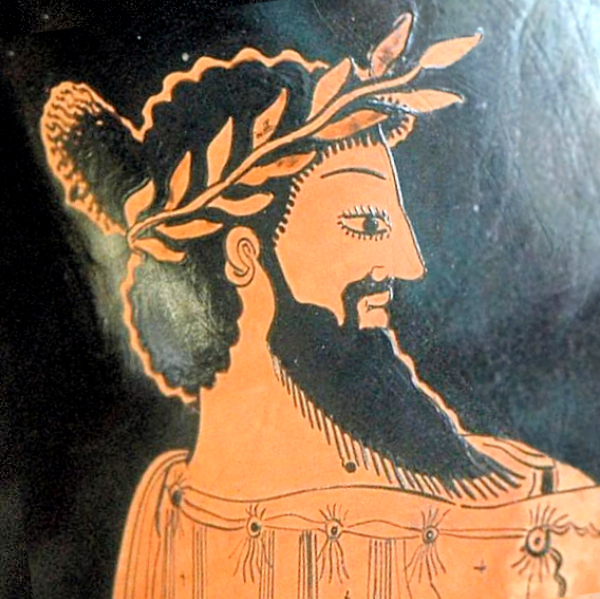
Croesus was famed for his vast wealth and, even today, you might hear people described as being “richer than Croesus”. You might also know him for his ill-fated counsel from the Oracle of Delphi. He sent the priestesses there priceless gifts such as statues and vessels made out of gold and asked them if he should send an army against Cyrus. The oracle, also known as the Pythia, replied that “if Croesus goes to war he will destroy a great empire.” Never did it occur to him that it might be his own.
So the Lydians crossed the Halys River into Cappadocia and captured the city of Pteria, most likely in 547 BC. Cyrus mustered his own army and marched to regain his land. The two sides met in battle and fought to a stalemate with both sustaining heavy casualties. Strategically, it was a victory for the Persians as Croesus fell back to the Lydian capital of Sardis. His plan was to wait out the winter and, in spring, attack again with a larger army which included his allies such as the Egyptians, the Babylonians, and the Spartans.
Foolishly, Croesus disbanded his remaining soldiers, thinking that Cyrus would never march on Sardis with winter fast approaching. But the Persian king did just that. Cyrus knew that his best shot at victory would be a quick assault before Croesus gathered reinforcements. The two armies fought again in December at the Battle of Thymbra where Cyrus scored a decisive victory.
According to Herodotus, the winning strategy came courtesy of Harpagus. The Lydians had a large and powerful cavalry. To counter that, Harpagus advised Cyrus to put his frontline soldiers on the dromedary camels they brought along to carry food and cargo. His reasoning was that horses were afraid of camels and even hated their smell and would turn to flee when they met. Indeed, this was the case, and many Lydian soldiers were thrown off their mounts and quickly dispatched by the Persian infantry running behind the camels.
Most of the Lydian army surrendered. What was left of Croesus’s forces retreated to Sardis but, of course, Cyrus followed closely and laid siege. Croesus hoped that his allies might still come and save the day if he could hold out long enough. Alas, the siege lasted only 14 days. The Persians entered Sardis by scaling a section of the wall that was completely unguarded. The grounds outside were so steep that they were thought to be unclimbable, but a soldier named Hyroeades proved that it was possible and the rest of the Persians quickly followed suit. And so Sardis fell and, with it, the Kingdom of Lydia which, after 650 years, became a province of the Achaemenid Empire.
The fate of Croesus is a question that remains unanswered today. According to Herodotus, Cyrus intended to burn him on a pyre, but the god Apollo sent a rain to put out the flames. Seeing that the former Lydian king had divine protection, Cyrus allowed him to stay on as one of his courtiers, as he did with Astyages. Of course, this is a rather fanciful tale where the once-mighty king gets a happy ending. The poet Bacchylides said that Croesus wanted to burn himself alive, but that Apollo took pity on him and sent him with the Hyperboreans, a mythological race of giants, in the land of the north. Scholars have interpreted this as a poetic way of saying that the king had a peaceful death.
The last piece of evidence which suggests that Croesus, indeed, died during the fall of Sardis, is the Nabonidus Chronicle, once again. It states that, in the year 547/546 BC, during the month of Ajaru (which corresponds to April/May), Cyrus marched against a country, killed its king and took its possessions. The only problem is that the inscription is partially damaged and we can’t make out the name of the country. It could have been Lydia or it could have been someplace else.
The Fall of Babylon
Cyrus continued his conquering ways and captured many cities in Asia Minor and Mesopotamia. So it happened until there was only one other power left in all of western Asia – the Neo-Babylonian Empire, ruled by King Nabonidus whose chronicle we have used and will continue to use as a main source.
Unsurprisingly, war erupted between the two nations. Unfortunately, while we know the major points, we have very little detail on the war. The only large-scale battle that we know of took place at Opis in 539 BC and it was a decisive victory for the Persians. Days later, they took the city of Sippar which surrendered without any bloodshed.
Interestingly enough, multiple sources indicate that Cyrus walked into Babylon itself without battle. And here we arrive at another contentious point. The Cyrus Cylinder, for instance, portrays the Persian king as a liberator who was welcomed with open arms by the Babylonians. This is not completely out of the question, as Nabonidus might have been an unpopular king who angered his people by ignoring Marduk, the patron god of Babylon, and trying to enact a religious reform based around the worship of the Moon god Sin.
The Nabonidus Chronicle also says that the army of Cyrus entered Babylon “without battle”, but does not provide us with any juicy details. This could mean that the people were happy with their new king, but it could also fall in line with differing ancient accounts which say that the two armies simply fought outside the capital. However it happened, the outcome was the same: mighty Babylon had fallen and was now part of the Achaemenid Empire, never to be an independent power again.
The Satrapies
Now Cyrus was King of the Four Corners of the World, a title meant to denote a person who ruled over the whole of Mesopotamia. However, he was faced with a new problem – how would he oversee and manage the largest empire the world had ever known? Obviously, he couldn’t be everywhere at once, but his kingdom would be full of issues which demanded his attention – from serious problems like riots, uprisings, and food shortages to mundane affairs like taxes and military recruitment.
Cyrus employed a primitive version of a federal government. He divided his empire into administrative units known as satrapies which were run by governors called satraps. Twenty-six satraps were appointed in Cyrus’s time and they ruled in his name, dealing with all the issues that might arise in their regions.
They had a lot of authority, but Cyrus had the forethought not to give them too much unchecked power. There were still officials who were outside the purview of satraps and reported straight to the king. They included army generals, finance officials, as well as a special courtier who went from one satrapy to another to conduct inspections, known as the “eye of the king”.
Truth be told, this was a strategy that Cyrus borrowed from the Median Empire. They used client kings who acted as governors over smaller autonomous areas, but Cyrus was the first to employ them on a large scale.
This innovative approach to the administration of a large empire proved successful, even as Cyrus’s successors continued his expansionist ways to add new kingdoms to their land. A testament to this was the fact that the empire lasted for another 200 years after Cyrus’s death until it was conquered by Alexander the Great. By comparison, Alexander’s empire immediately collapsed and splintered after he was gone.
The Cyrus Cylinder
Perhaps another factor which helped stabilize the Achaemenid Empire was Cyrus’s alleged policy of tolerance. There are multiple historical and religious texts which assert that Cyrus allowed the people he conquered to practice their own customs and religions. He endeared himself to the Babylonians by taking part in their New Year celebrations and obtaining the blessing of the god Marduk. In the Bible, it says that he allowed the exiled Babylonian Jews to return to their lands. Consequently, he is referred to as an “anointed” of God.
One artifact that was greatly responsible for Cyrus’s reputation as a liberator and champion of human rights is the Cyrus Cylinder. Recovered from the ruins of Babylon, it now sits in the British Museum and is often hailed as the first charter on human rights in the world. This view was chiefly promoted in 1971 by Mohammad Reza Pahlavi, the last Shah of Iran, during the 2,500-year celebration of the Persian Empire. The idea was continued by the United Nations, but it is one that historians and scholars are not very happy with.
They see the cylinder as a priceless artifact, but one that is filled with standard propaganda. Basically, it portrays Nabonidus as an unjust ruler and shows Cyrus as the liberator chosen by Marduk to come save the Babylonians. It is in line with Mesopotamian traditions and should not be regarded as anything more than a political declaration.
The Demise of Cyrus
The death of Cyrus ends with one big question mark as there are, at least, five different outcomes according to ancient sources. Although some assert that the king died peacefully at home, most agree that Cyrus met his end in battle. Against whom, exactly, is the bone of contention.
Herodotus, again, gives one of the most detailed accounts, although even he admits that he heard multiple stories and this is simply the one he deemed “most worthy of credit.”
In 530 BC, Cyrus fought the Massagetae, a nomadic Scythian tribe ruled by Queen Tomyris. Cyrus first extended an offer of marriage to the queen which she refused, although another source presented Tomyris as the wife of Cyrus. Either way, the two armies were supposed to meet in open battle, but Cyrus set a trap for the Massagetian troops and killed many of them, including the general Spargapises who also happened to be the queen’s son.
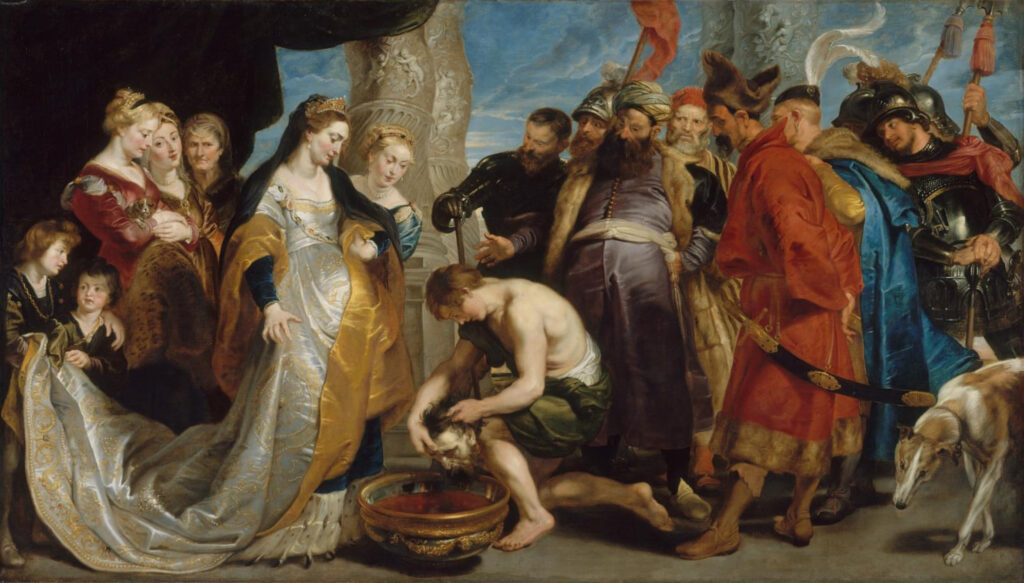
Angered by this deception, Tomyris gathered all her remaining forces and met the Persians in a fierce battle where she emerged triumphant. Most of the Persians had been slain, Cyrus included, ending his reign of 29 years. Not satisfied, Tomyris tracked down his body, decapitated him and dipped Cyrus’s head in a pool of blood so that the king might fill his bloodlust which cost Tomyris the death of her son.
The Tomb of Cyrus
The remains of Cyrus were interred in a mausoleum in the capital of Pasargadae, named after his tribe. The ruins of this ancient city still exist today near the city of Shiraz, in modern day Iran, and the most treasured landmark is the tomb of Cyrus.
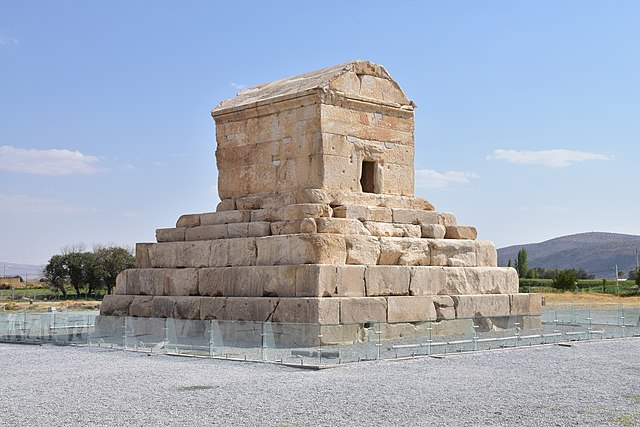
Oddly enough, the tomb might have not been around today were it not for the greatest enemy of the Achaemenid Empire – Alexander the Great, who was an admirer of Cyrus. Greek historian Arrian related how the Macedonian king paid a visit to Cyrus’s tomb after conquering his empire. He was deeply angered to discover that thieves had desecrated it and stolen almost everything of value. The golden lid on top of Cyrus’s coffin was gone; his body had been thrown to the floor, perhaps in a failed attempt to steal the entire coffin which proved too heavy.
Alexander ordered the tomb repaired and Cyrus’s remains restored to their proper place. He also had the guards of the monument arrested and tortured so they would give him the names of the thieves.
Also there was an inscription which does not exist anymore so the exact wording is iffy. It said: “O man, I am Cyrus, son of Cambyses,
who founded the empire of Persia
and ruled over Asia.
Do not grudge me my monument.”



